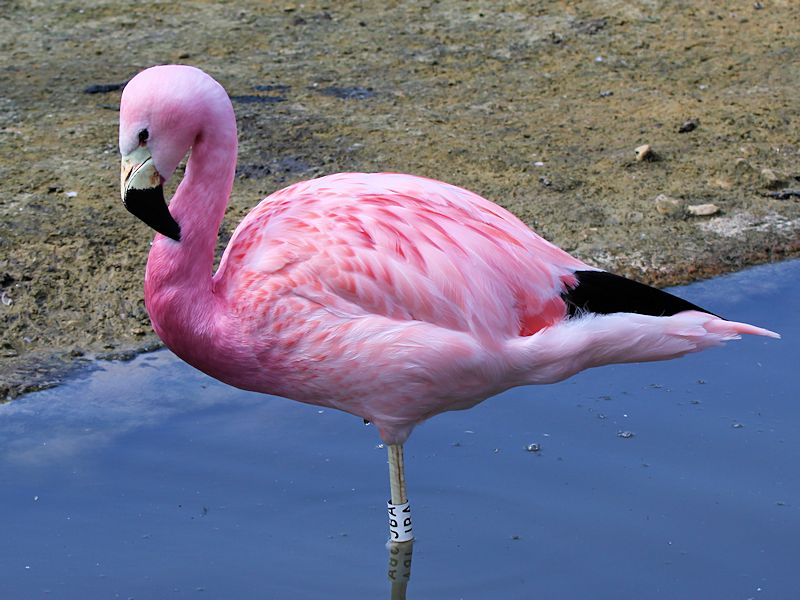
Phoenicoparrus andinus
TAXONOMY
Phoenicoparrus andinus Philippi, 1854, salt lake near Altos de
Pingopingo, Antifagasta, Chile.
OTHER COMMON NAMES
English: Greater Andean flamingo; French: Flamant des Andes;
German: Andenflamingo; Spanish: Parina Grande.
PHYSICAL CHARACTERISTICS
40–43 in (102–110 cm); 4.4–5.3 lb (2.0–2.4 kg); female approximately
10% smaller than male. The head and neck are suffused
with wine-red, the rest of the body whitish, tinged with
pink, brightest on the wings. The flight feathers are black. The
inner third of the bill is yellow, with a reddish patch between
the nostrils, the remainder black. Legs and feet are yellow.
The juvenile is grayish, streaked darker.
DISTRIBUTION
Found only in the high Andes of southern Peru, Bolivia,
northern Chile, and northwestern Argentina.
HABITAT
Shallow high-altitude saline and alkaline lakes and lagoons.
BEHAVIOR
Gregarious, with group displays involving ritualized movements
of head and wings, accompanied by loud calls. In flocks
of a few hundred to several thousand.
FEEDING ECOLOGY AND DIET
Sieves diatoms from shallow water and mud.
REPRODUCTIVE BIOLOGY
Lays single egg on mud nest close to or in shallow water, the
time of breeding being dictated by rainfall rather than seasons.
Nests in dense colonies, up to several thousands of pairs. Incubation
period c. 28 days; fledging probably 70–80 days. Both
parents incubate and care for young, which gather into groups.
Productivity very variable, with complete failures in some
years. Age of first breeding probably four or five years.
CONSERVATION STATUS
Not threatened, but has declined in some areas in recent years
through habitat destruction and egg-harvesting. Recent establishment
of reserves should benefit the species.
SIGNIFICANCE TO HUMANS
Egg-harvesting.
Photo Gallery of - Andean flamingo
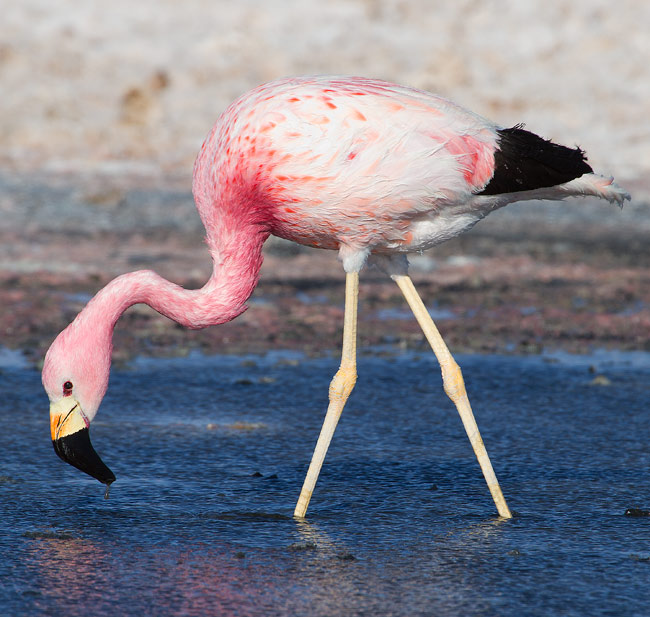
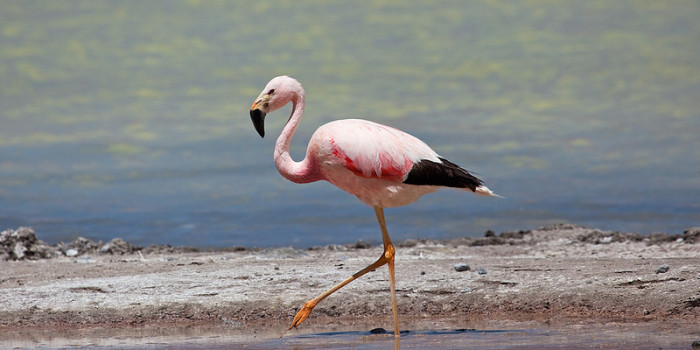
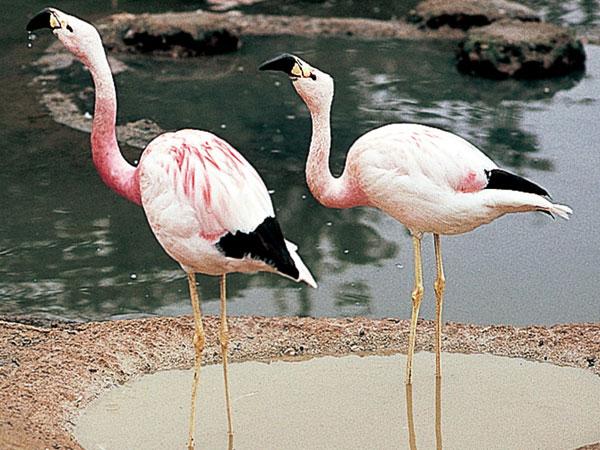
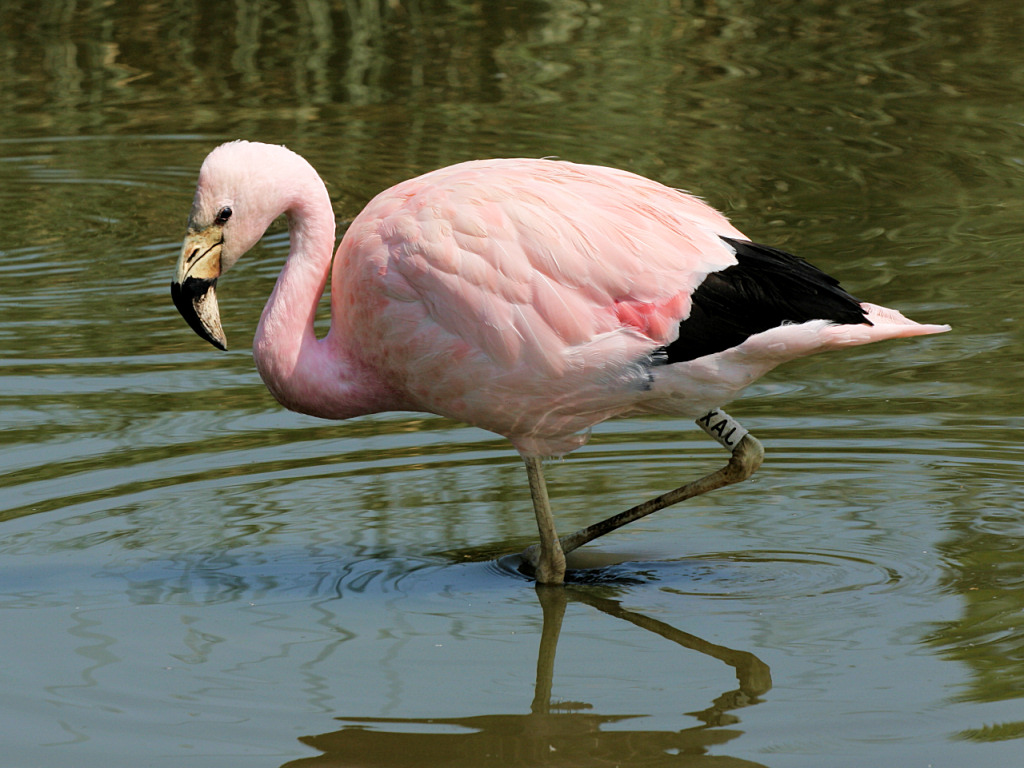
 Animalia Life
Animalia Life